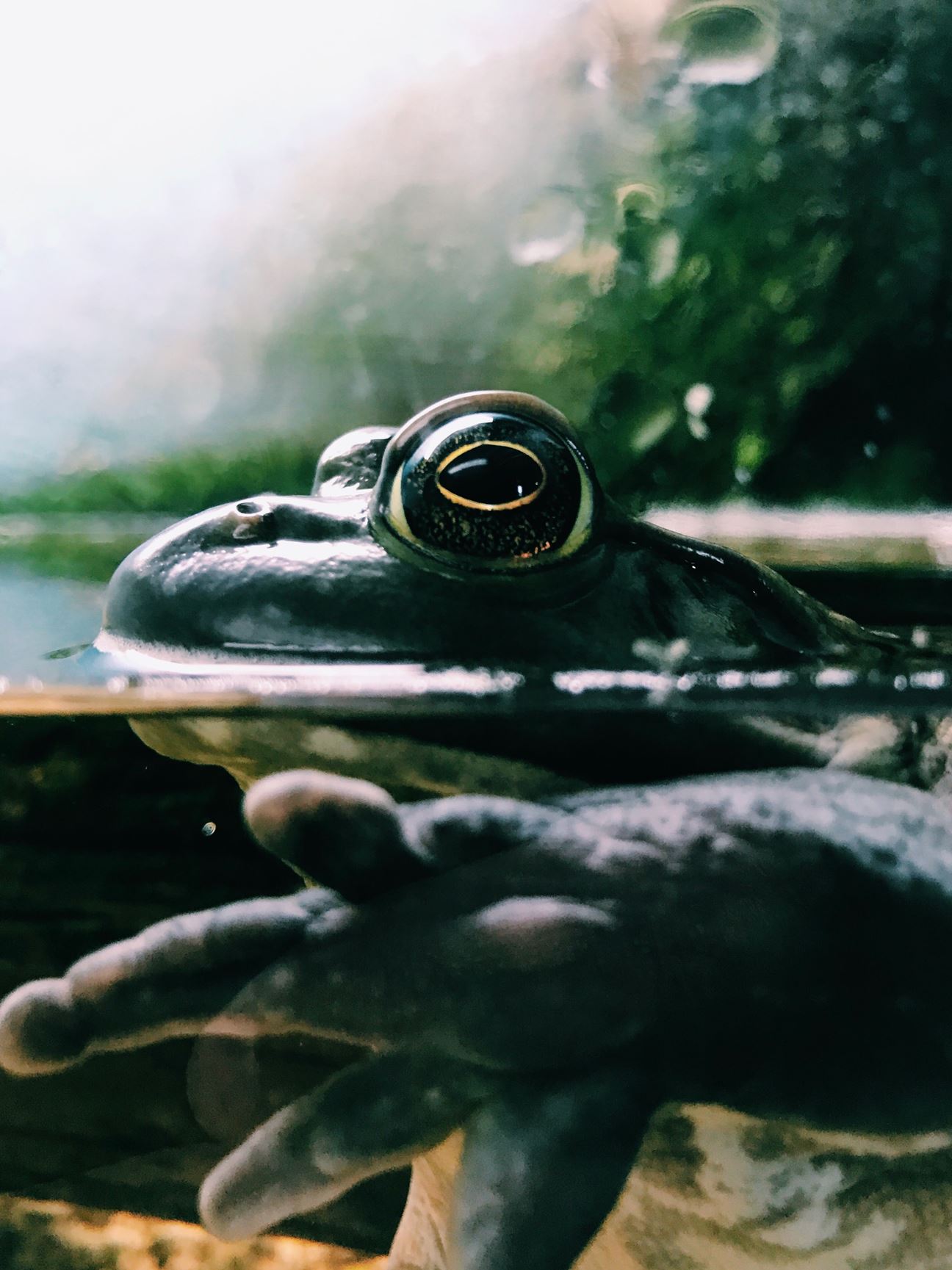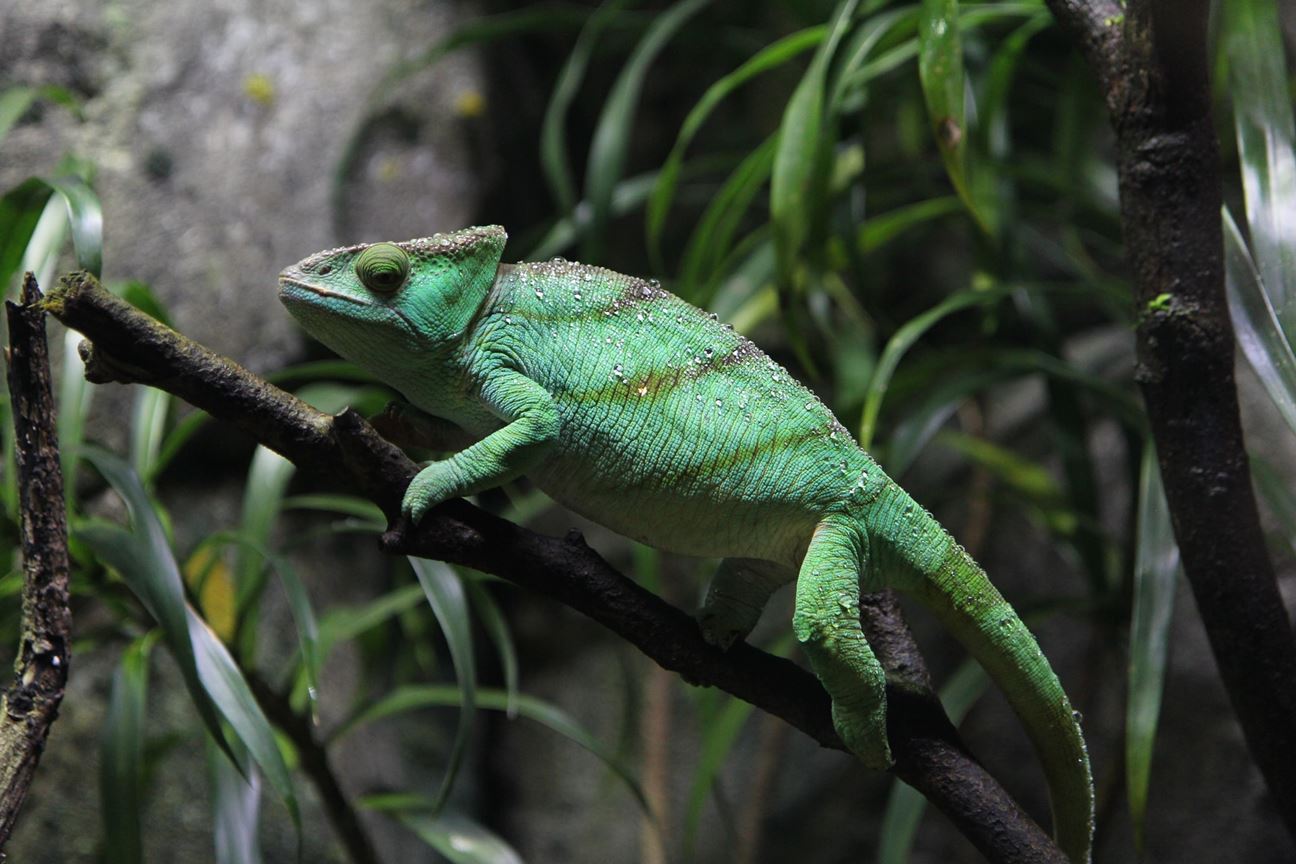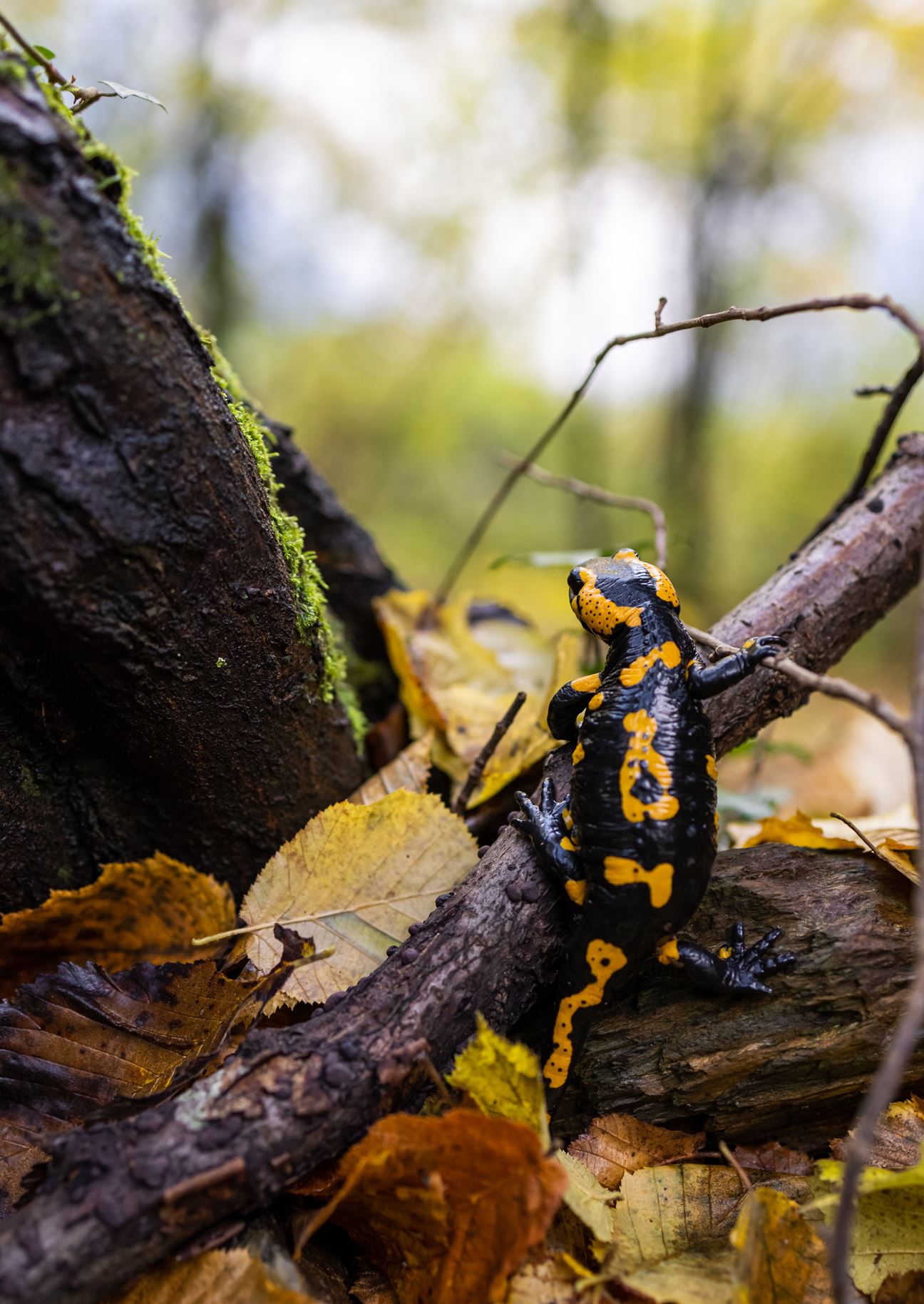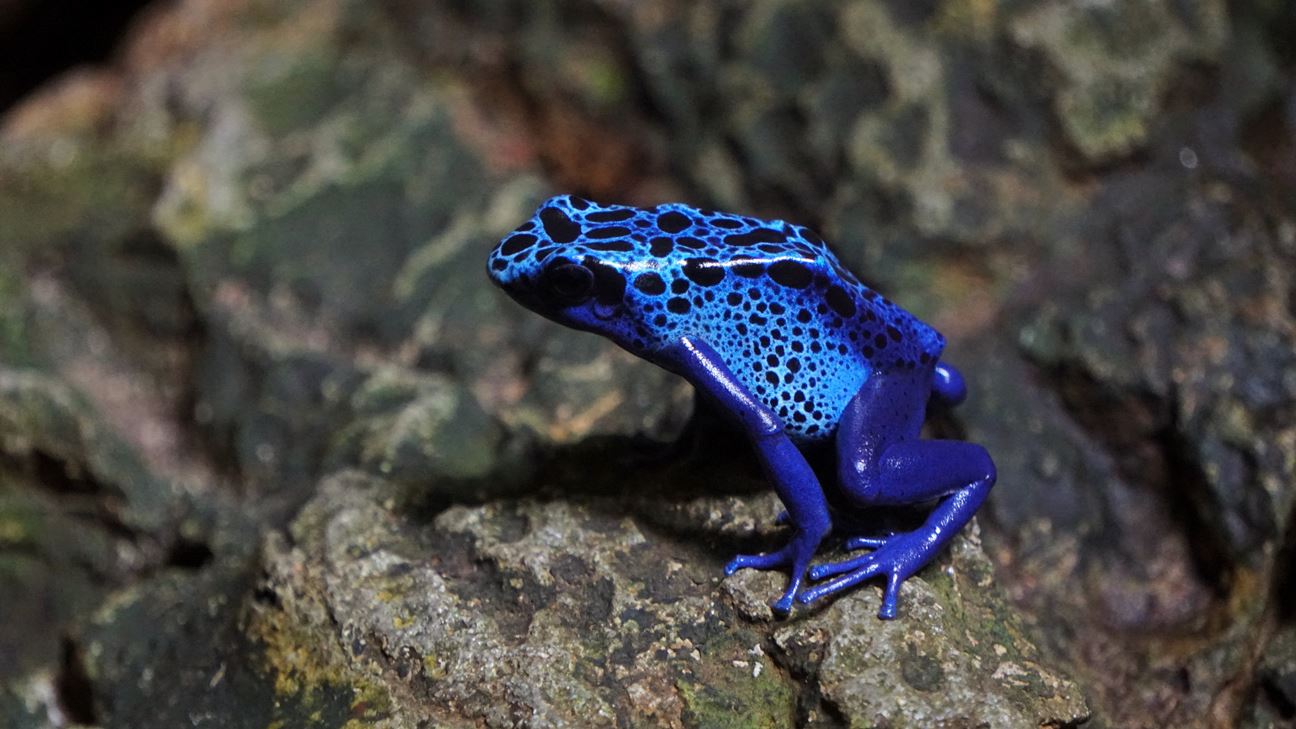They have many traits that they share. But they also differ. Learn the subtle differences between the amphibian and reptile families.
Are frogs amphibians or reptiles? And what about snakes? Most people will often take a minute to get that answer right. And a few more may never get it right. The reason may be because frogs and snakes are both similar in several ways - they live in both water and on land, they are both cold-blooded; they are both, erm, scaly and slimy! The fine nuances in their appearances are sure to confuse many. So, let us first define amphibians and reptiles and then understand the differences between these two animal families.
What are amphibians?

The word amphibian comes from a Greek word which when broken down gives us Amphi (meaning dual bio or habitat) and bio (meaning life). So one simple way to define amphibians is that they can live in two different environments (land and water) and have two distinct stages of their life (young ones and adults). While this is true for most amphibian species, there are a few exceptions. For example, salamanders are not aquatic and spend all their time on land. Their characteristic moist and porous skin helps them breathe and also absorb water. The reason for this is that some amphibians do not have lungs or gills to breathe.
What are reptiles?

On the other hand, reptiles have scaly, dry, and hard skins. They are tetrapod animals, meaning they walk on four limbs and live exclusively on land. These air-breathing vertebrates have lungs that aid breathing.
Now, let us get out of the way all the things that make them alike. Both amphibians and reptiles have traits they share. For example, they both use similar defence mechanisms. A few species from both the families are known to change the colour of their skins in order to camouflage themselves in their surroundings. They are also known to display mimicry (also termed copycat species) wherein they mimic another inanimate object in order to blend in the environment and hide from the potential predator. Another similarity between amphibians and reptiles is that they are both cold-blooded vertebrates. Both these animals are known to have a cloaca - a rear opening which serves as a chamber for digestion, reproduction, and excretion.
Before we see the differences between amphibians and reptiles, let us see some examples of these both classes of animals. Some examples of amphibians include frogs, newts, salamander, caecilians, and caudata. Reptiles include lizards, turtles, snakes, crocodiles, geckos, and chameleons.
Habitat
One of the major differences between amphibians and reptiles is the relationship they share with water. While water is a must for the survival of amphibians, reptiles can almost exclusively live on land. Amphibians start their lives in water. Over the years, amphibians have adapted themselves to live in many environmental conditions. They can be found in forests, woodlands, meadows, farmlands, streams, springs, rivers, lakes, swamps, and marshes. Most amphibian species divide their lifetime between land and water. They lay their eggs in swamps and lakes and hence, moisture is essential for the survival of amphibians. During the larval stage, amphibians live in water. At this stage, they are known to breathe using their gills. As adults, amphibians move onto land. As adults, they are known to breathe using both their gills and lungs as just lungs are not enough to provide them with oxygen.
 A bright skinned salamander
A bright skinned salamander
On the other hand, reptiles do not start their lives in the waters. Similar to amphibians, reptiles can also survive in a wide range of habitats - including jungles, forests, deserts, and even our backyards. They can be either terrestrial or aquatic. For example, turtles live in oceans but lizards live on land. Snakes and crocodilians live on land, but also spend time in the water.
Skin Type
Most amphibians have a thin outer layer of skin. They have a smooth and moist skin which is coated with slimy mucus. The mucus is continually secreted which keeps their skin lubricated and thus allows the oxygen to pass which aids in cutaneous respiration. Now, since the amphibians cannot drink water through their mouths, their skins absorb the water that keeps them hydrated. In some species, the skin can also produce toxins which help keep the predators off. For example, the toxins produced by the golden poison frog is so powerful that a dose is enough to kill 10-15 humans.
 The porous skin of a frog
The porous skin of a frog
Another feature of the amphibian skin is their colour. This colour varies from dull-looking to vibrant, depending on their environment. The pigment in their skin cells helps the amphibians camouflage with their immediate surroundings. Additionally, the pigments in the skin also change as per the weather conditions, thus aiding the organism to maintain body temperature. During colder days, the pigments on the skin get concentrated thus aiding the absorption of more heat.
When it comes to the reptiles, their skin structure is the stark opposite of that of the amphibians. Unlike amphibians who breathe through their skins, the heavily keratinized scales on their skin prevents them from absorbing the oxygen from the surroundings. And so, reptiles breathe only through their lungs. Reptilian skin looks like a watertight armour. In contrast to the amphibians, the majority of reptiles live on land, though there are some exceptions. Their epidermal scales are arranged in membrane-like layers. This arrangement can vary as per species - in case of crocodiles and turtles, the skin is covered with dermal scutes (bony structures), but in case of snakes and lizards, the entire skin is covered in overlapping scales.
 The scale-y skin of a snake
The scale-y skin of a snake
Reptile skin also aids them in movements. The dense tight rows of scales and the links between them allow the organisms to move in all directions. The scales are further modified in horns, crests, or spikes. Some reptiles like chameleons can change the colour of their skin in an attempt to defend themselves, and also communicate in certain instances. This colour change happens by the change in distance between the guanine crystals (a highly reflective skin cell surface). One skin feature that sets apart amphibians and reptiles is shedding of the skin. The process is called ecdysis. The reason reptiles shed skin is to get rid of the old and worn skin, and also to get rid of the accumulated parasites and pathogens.
Fertilization and reproduction
Once the mating pairs are established, amphibians reproduce via sexual reproduction. This involves the fusion of a female egg and a male sperm. Fertilization in amphibians is external. This happens when a female releases her eggs into the water. The male then simultaneously releases the sperm in very close proximity to the unfertilized egg. The sperm has to pass through the gel-like layer of the eggs for fertilization. Some species like salamanders and caecilians can have internal fertilization. Female amphibians who have tails, release egg sacs on land and male amphibians then come and deposit their sperm onto the eggs. Amphibians are known to lay large numbers of eggs. Many organisms come together to lay the eggs in groups hoping that most will survive. The eggs that are laid are covered in a jelly-like substance which provides moisture to the eggs.
 a gecko hatching
a gecko hatching
Most reptiles, on the other hand, have internal fertilization. Males can have either one or two penises that help pass the sperm and deposit it in the female cloaca. Fertilization happens inside the female body after which the egg is released through the opening of her cloaca. A few female reptile species are known to retain the egg inside their bodies after the fertilization. The egg hatches inside the body and leaves the offspring leaves the mother’s body through her cloaca. Unlike amphibians, the eggs of the reptiles are amniotic. These eggs have albumin that helps nourish the embryo.
Defence Mechanism
Running is usually not an option for amphibians. Secretion of toxins through nails and teeth, puffing up their bodies to intimidate the predators, and biting are some physical defence mechanisms used by most amphibians.
In the case of reptiles, hissing is a very common method of scaring off the predators. Other defence mechanisms include breakaway tails, tail whipping, appearing larger spikes, and an element of surprise.
Colour Spectrum
When it comes to identifying colours, amphibians have a narrow band of the colour spectrum. Their threshold for discrimination of colour is found to be lowest among the class of animals.
On the contrary, reptiles can detect higher wavelengths, thus enabling them to see colours even into the UV range.
Heart
Yet another difference between the amphibians and reptiles is the circuit of the heart. Amphibians have a three-chambered heart. The two atria receive the blood, which is then mixed in the ventricle. The presence of only one ventricle reduces the efficiency of the oxygenated blood (because of the mixing of oxygenated and deoxygenated blood).
The reptiles, too, have a three-chambered heart, but a slightly more efficient one. The partial septum divides the ventricle, just separating oxygenated blood from the deoxygenated blood. A few reptiles like alligators and crocodiles are known to have a four-chambered heart.